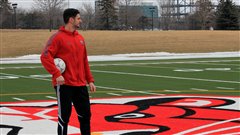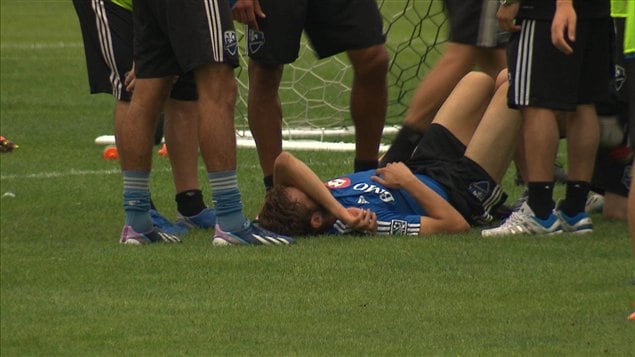When artificial turf first appeared, many athletes complained of injuries. The surface was hard, and there was no “give” to it when athletes turned or twisted, often resulting in knee or other injuries.
Artificial surfaces have vastly improved, but a new study says athletes are still wary of playing on an artificial surface
Constantine Poulos is the assistant strength and conditioning coach in the sport and recreation department at York University in Toronto.
ListenThe technology of artificial turf sports playing surfaces has vastly improved since its introduction in the mid to late 1960’s.

While there were certainly injuries in the early technologies, recent studies show no difference in non-contact injuries between playing on modern artificial surfaces and grass.
However, those statistics are measured in terms of the number of practices or games a player misses. They don’t take into account, soreness, stiffnees, or chronic pain as the player may not miss any games or practices.
Constantine Poulos says his study questioned 99 professional soccer players from 6 teams in Major League Soccer (MLS), North America’s highest level of pro soccer. The study asked about their perceptions on playing on the newer artificial turf compared to natural grass.
The vast majority, 80 percent felt that the risk of non-contact injuries was greater on the artificial surface.
Some 97 percent linked artificial turf with greater muscle and joint soreness, and 90 percent said they had longer recovery times after playing on the artificial surface, and 89 percent said they felt it led to more chronic injuries.
In some cases, the feeling that there is an injury risk may change the way a player moves and performs.
Poulos admits the perceptions may be coloured somewhat by past experiences in that a player hurt on a previous technology surface may lump all artificial turf technologies together as promoting non-contact injury.
He points out that his study is only a start and that further studies should be done with other sports to determine whether there is an issue that needs a change in terms of non-contact injuries, player recovery times and methods, game scheduling, and perhaps the surfaces themselves.







For reasons beyond our control, and for an undetermined period of time, our comment section is now closed. However, our social networks remain open to your contributions.